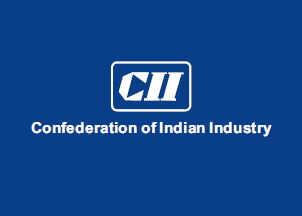
The Reserve Bank of India governor Raghuram Rajan presented the sixth monetary policy statement for this financial year, earlier this month. In the policy he decided to maintain the status quo and not change the repo rate. Repo rate is the rate at which RBI lends to banks, which acts as a sort of a benchmark to the interest rates that banks pay for their deposits and in turn charge on their loans.
After the policy, the representatives of the industry protested and said that they were expecting a repo rate cut, which would revive consumption as well as investments. As Chandrajit Banerjee, director of business lobby CII, said: “A rate cut would have been spot-on for rejuvenating the investment cycle. We hope RBI would resume the rate-cutting cycle in the subsequent monetary policy soon after the Union Budget to complement the government’s efforts to revive private investments and bring the economy back to sustained growth.”
Getamber Anand, president of real estate lobby CREDAI, echoed Banerjee’s sentiments, when he said: “We are very disappointed. We were expecting a 25 basis points reduction in the repo rate.” He also said that home loan interest rates should be lower than 9%.
The belief is that at lower interest rates people borrow and spend more, and industries also invest more. This sounds very convincing but is essentially very simplistic thinking that lobbyists try to peddle.
Conventional thinking assumes a negative relationship between consumption and interest rates. But that is also a function of how people save money. Michael Pettis in his book The Great Rebalancing—Trade, Conflict, And the Perilous Road Ahead for the World Economy makes a very interesting point about China.
As he writes: “Most Chinese savings, at least until recently, have been in the form of bank deposits. In a financial system in which deposit rates are set by the central bank, the value of bank deposits is positively, not negatively, correlated with the deposit rate. Chinese households, in other words, should feel richer when the deposit rate rises and poorer when it declines, in which case rising rates should be associated with rising, not declining, consumption.”
Given that a large portion of the financial savings are invested in bank deposits, any rise in interest rates should make people feel richer and in the process make them consume more.
Vice versa, any fall in interest rates should make people feel poorer and lead to lower consumption. Further, if the interest rate on deposits is lower than the rate of inflation, or around the rate of inflation, or not substantially different from the rate of inflation, any rise in interest rates should lead to a higher consumption.
As Pettis writes: “If deposit rates do not reflect market conditions—most important, inflation rates…then bank deposits, who measure their wealth in terms of the expected real return on their depositors, should welcome rising rates and deplore declining rates. The former should make them feel richer and so increase their consumption and the latter make them feel poorer.”
This is something that is largely applicable to India as well. While the central bank does not set interest rates on fixed deposits as such, large portions of household financial savings are invested in bank deposits, provident and pension fund schemes (with a significant portion of these schemes being run by the post office). In these investments, as interest rates go up, people feel richer.
In 2012-2013, the 54.4% of household financial savings were in bank deposits and provident and pension fund schemes. Nearly 16.2% of household financial savings were held in the form of cash. Only 6.62% of household financial savings were invested in stocks and debentures. 24.4% of the savings were invested in life insurance, where it is next to impossible to figure out what returns to expect.
In 2011-2012, 56.7% of the household financial savings were invested in bank deposits and provident and pension fund schemes. In 2010-2011, 51% of the savings were invested in deposits and provident and pension fund schemes.
The point being that a major portion of household financial savings get invested in bank deposits and pension and provident fund schemes. This means when interest rates go up or are high, people are more likely to spend more.
Also, the another point that people forget is the multiplicity of needs. Not everyone is looking to borrow and spend when interest rates fall. As Malhar Nabar writes in an IMF Working Paper titled Targets, Interest Rates, and Household Saving in Urban China: “China’s households save to meet a multiplicity of needs – retirement consumption, purchase of durables, self-insurance against income volatility and health shocks – and act as though they have a target level of saving in mind. An increase in financial rates of return, which raises the return on saving, makes it easier for them to meet their target saving.”
This is a point that needs to be taken into account. It applies as much to India as it does to China. People are trying to save money for emergencies as well their retirement, education and weddings of their children and so on. And this lot gets hurt every time the interest rate on their deposits goes down.
This means they need to save more and consume less when interest rates go down. Hence, lower interest rates do not lead to an increase in consumption for everybody. The truth is a lot more nuanced than that.
There is another point that needs to be made here. Between December 2014 and December 2015, the disbursal of personal loans (the term RBI uses for home loans, education loans, vehicle loans, loans against shares, bonds and fixed deposits, and what we call personal loans) went up by 16.1%. This after the RBI cut the repo rate by 125 basis points during the course of the year. One basis point is one hundredth of a percentage.
How good was the personal loan growth between December 2013 and December 2014? 15.3%.
Hence, the difference in personal loan growth for the one-year period ending December 2014 and the one-year period ending 2015 is not substantial, despite lower interest rates. One explanation for this lies in the fact that banks have not passed on the entire benefit of the repo rate cut to the end consumers.
The other reason lies in the fact that not everybody is looking to borrow. Those looking to save are hurt by lower interest rates and end up consuming lesser in order to meet their target saving. And this is a point that doesn’t get discussed enough, given that it isn’t so obvious.
The column originally appeared in the Vivek Kaul Diary on Equitymaster on February 11, 2016



